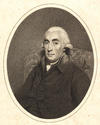 In late medieval Scotland the Church of Rome, in the form of its abbeys, monasteries and universities, still provided the gateway to scientific knowledge, which was largely based on ancient Greek and Latin texts. These texts had changed little over the centuries and were available only to the few who could read Latin and fewer still who understood Greek. By 1560 the University of Glasgow, like the rest of Scottish universities, had been in decline for some time and the political and religious turmoil created by the Reformation almost saw its closure. The monastic system was swept away but the University fortunately survived and from 1577 began to flourish once more.
In late medieval Scotland the Church of Rome, in the form of its abbeys, monasteries and universities, still provided the gateway to scientific knowledge, which was largely based on ancient Greek and Latin texts. These texts had changed little over the centuries and were available only to the few who could read Latin and fewer still who understood Greek. By 1560 the University of Glasgow, like the rest of Scottish universities, had been in decline for some time and the political and religious turmoil created by the Reformation almost saw its closure. The monastic system was swept away but the University fortunately survived and from 1577 began to flourish once more.
 The new faith was not as enthusiastic about the use of Latin and allowed scholars to study other classical sources previously unavailable to them. So despite the deprivations of the 17th century Glasgow was able to take a leading role in an extraordinary flowering of cultural and intellectual life, the Scottish Enlightenment. This 18th century academic revolution was associated with a further reorganisation of the University in 1727 and created the conditions in which enormous contributions to science were made.
The new faith was not as enthusiastic about the use of Latin and allowed scholars to study other classical sources previously unavailable to them. So despite the deprivations of the 17th century Glasgow was able to take a leading role in an extraordinary flowering of cultural and intellectual life, the Scottish Enlightenment. This 18th century academic revolution was associated with a further reorganisation of the University in 1727 and created the conditions in which enormous contributions to science were made.
 Perhaps the best examples are the contributions of the Glasgow Professors, William Cullen (1710-90) and Joseph Black (1728-1799), who produced groundbreaking work on heat. This culminated in the historic day in 1765 when Black's friend James Watt (1736-1819), the scientific instrument maker to the University, first thought of the "separate condenser". This singular invention lead to a quantum leap in the efficiency and power of the primitive steam engines of the day and quite literally changed the world.
Perhaps the best examples are the contributions of the Glasgow Professors, William Cullen (1710-90) and Joseph Black (1728-1799), who produced groundbreaking work on heat. This culminated in the historic day in 1765 when Black's friend James Watt (1736-1819), the scientific instrument maker to the University, first thought of the "separate condenser". This singular invention lead to a quantum leap in the efficiency and power of the primitive steam engines of the day and quite literally changed the world.